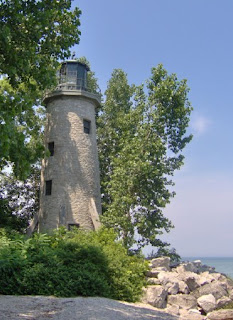Pelee Island, Ontario : A Traveller's Guide
DESTINATION:
PELEE ISLAND, ONTARIO, CANADA
 |
| Prickly Pear Cactus |
Along with its natural beauty, the island offers a host of other activities including: fishing, kayaking, hiking, and biking. Be sure to visit the Vin Villa ruins--all that remains of Canada's first commercial winery. Also, a stop at Lighthouse Point and Fish Point are a must do.
At the museum located at the west dock, visitors can view evidence of the hundreds of shipwrecks claimed by Lake Erie's shallow waters during storms and naval battles. The museum also includes an amazing exhibit on Al Capone and his rum runners, who used Pelee Island as a steppingstone into Ohio during prohibition.
LIGHTHOUSE POINT
 |
| Original Pelee Island Lighthouse (1833) |
The park includes Lake Henry Marsh to the west side, rich in wildlife, plants, and spectacular sunsets. The recently restored Pelee Lighthouse towers over the eastern shoreline. Built in 1833 to guide ships through the treacherous Pelee Passage, it is the second oldest Canadian lighthouse on Lake Erie [The first is Marblehead Lighthouse (1822) in Ohio].
FISH POINT
The point itself features pristine Lake Erie beach on either side with a spectacular view to Bass Island Archipelago of Ohio, and picture perfect sunsets. Caution: there are hazardous currents at the tip and swimming is NOT allowed.
 |
| Blue Racer Snake |
STONE ROAD ALVAR
Alvar is an Estonian word that describes a limestone plain covered with scattered vegetation that endures extreme wet and dry conditions. Alvars have their own unique flora that takes advantage of the extreme variations in moisture and the highly calcified sail and bedrock openings. With Oak-Hickory Woodland, Oak Savannah, Red Cedar Savannah, Old-Field Thicket, Prairie and Open Alvar communities, it can be safely said that this mix of communities occurs nowhere else in Canada or in any of the adjacent U.S. States.
The alvar has three plant species that occur nowhere else in Canada: Corn Salad, Yellow Horse Gentian, and Leavenworth's Sedge and is also prime habitant for the endangered Blue Racer snake and various species of butterfly.
Pelee Island is just a 1.5 hour ferry ride from Leamington, Kingsville Ontario on the MV Jiimaan or 1hr 45mins from Sandusky, Ohio. For ferry schedules and fares click here.
Pelee Island Tourism Attractions
RECOMMENDED GUIDES
Subscribe to:
Post Comments (Atom)




0 comments:
Post a Comment